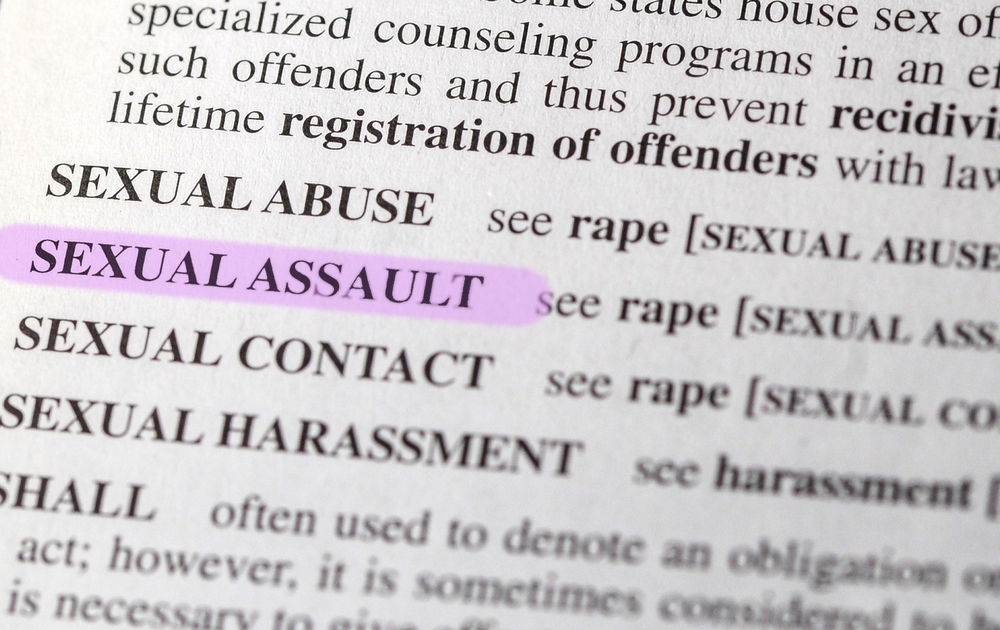Clear definitions are essential when discussing sexual assault, both for survivors and those supporting them. Knowing the legal and psychological terms used in courtrooms, reports, and therapy helps survivors better navigate the justice system, seek resources, and understand their experiences in context.
Below are key terms drawn from research, including insights from a report by Jacey Passmore for The Ballard Brief at Brigham Young University. The Ballard Brief is a research initiative where students investigate and publish briefs on various social issues; it’s the research arm of the Ballard Center for Social Impact, which aims to educate students about social problems and empower them to contribute to solutions.
In this brief, Passmore examines “Underreporting and Dismissal of Sexual Assault Cases Against Women in the United States.” In the brief, Passmore provides several definitions which are important for survivors to understand.
Legal Terms
Acquittal
A legal ruling that the accused is found not guilty of the charges. It does not necessarily mean the alleged events did not occur.
Case Attrition
When a sexual assault case “drops out” of the justice system and is no longer pursued. This can happen at many stages, often because police label the report “unfounded,” prosecutors decide the case is unwinnable, or victims face overwhelming barriers to continue.
Plea Bargain
An agreement between prosecutors and the defense in which the accused pleads guilty to a lesser charge in exchange for avoiding trial.
Statutes of Limitations
Laws that prevent prosecution after a certain time has passed since the crime occurred. These vary widely by state and crime type.
Unfounded
A police determination that a reported crime is baseless or untrue, a classification that critics argue is often misused in sexual assault cases.
Core Definitions of Assault
Sexual Assault
Any nonconsensual sexual act prohibited by federal, state, or tribal law. It includes unwanted touching, forcible kissing, sexual comments, and penetrative acts.
Rape
The most severe form of sexual assault. It involves nonconsensual penetration — vaginal, anal, or oral — by any body part or object.
Consent
A clear verbal or nonverbal agreement to engage in sexual activity. Consent must be informed, freely given, mutual, and can be revoked at any time.
Rape Myths
False or harmful stereotypes that blame survivors or minimize the seriousness of rape. For example, the belief that victims “asked for it” based on how they dressed.
Victim Blaming
The tendency to hold survivors responsible for the assault, which deepens trauma and discourages reporting.
Survivor Experience Terms
Avoidance
A PTSD symptom where survivors steer clear of reminders of the trauma, including people, conversations, or places.
Burgess and Holmstrom Study
A landmark study in the 1970s that identified “rape trauma syndrome” and helped validate survivors’ experiences, paving the way for greater recognition of sexual violence.
Revictimization
When survivors of prior sexual assaults experience further victimization later in life.
Retraumatization
When survivors are forced to relive past trauma due to certain people, environments, or experiences, including through insensitive legal processes.
Tonic Immobility
A common trauma response where the body freezes, making it impossible to move or fight back during an assault.
Support and Evidence
Sexual Assault Kits (SAKs)
Containers used by medical professionals to collect forensic evidence after an assault. Kits include checklists, swabs, envelopes, and other tools.
(Editor’s note: The non-profit Joyful Heart Foundation’s End The Backlog campaign seeks to end the rapekit backlog.)
Sexual Assault Nurse Examiner (SANE)
Specially trained nurses who provide survivors with medical care and collect forensic evidence following an assault.
Sexual Assault Response Team (SART)
A multidisciplinary group that supports survivors during the legal process, often including law enforcement, advocates, and healthcare professionals.
Why Definitions Matter
Every state and jurisdiction defines sexual assault and rape differently, creating confusion and inconsistencies. Some require proof of resistance, some fail to define consent, and statutes of limitations vary widely. Understanding standardized definitions — like those from the FBI — can help survivors and advocates cut through this patchwork system.
Moreover, underreporting and case dismissal are major challenges. Studies show more than two-thirds of rapes in the U.S. go unreported, and many reported cases are dismissed before trial. Ultimately, only a small fraction of perpetrators face incarceration, which allows repeat offending.
By clarifying these terms, survivors can better recognize what happened to them, advocates can push for accountability, and communities can understand the barriers that keep so many cases from justice. Language empowers: the more accurately we describe sexual violence, the more effectively we can confront it.
